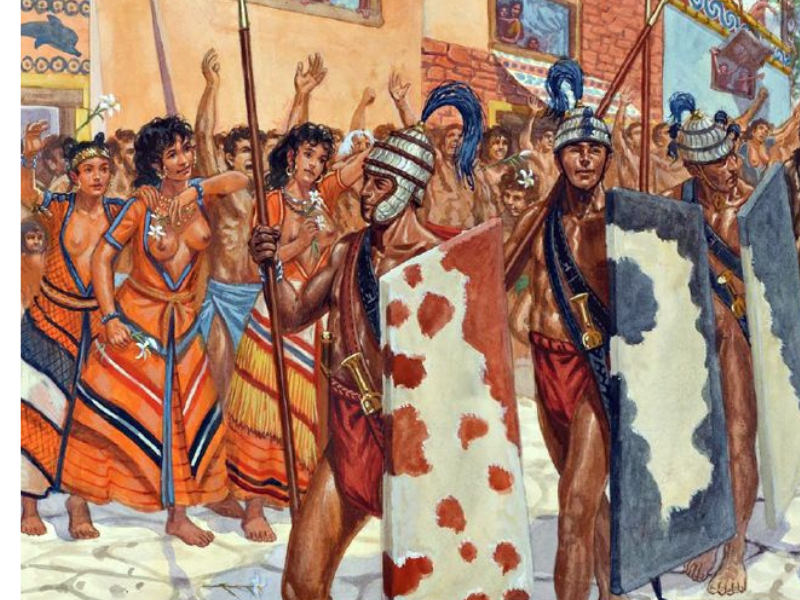Table of Contents
Introduction
The ancient civilizations of Minoan Crete and Mycenaean Greece, flourishing in the Bronze Age, are renowned for their cultural and architectural achievements. A less explored but equally fascinating aspect is their martial technology.
This article embarks on a comparative study of Minoan and Mycenaean martial technologies, delving into their distinctive approaches to warfare and defense. By examining their weapons, armor, and tactical strategies, we can gain insights into the military aspects that shaped these two influential civilizations.
Historical Context of Minoan and Mycenaean Civilizations
The Minoans, based on the island of Crete, and the Mycenaeans, located on mainland Greece, were two prominent cultures of the Bronze Age Aegean. The Minoans, known for their peaceful society and magnificent palaces like Knossos, flourished from approximately 2600 to 1400 BC.
In contrast, the Mycenaeans, who rose to prominence around 1600 BC and declined around 1100 BC, were known for their militaristic and fortress-like palaces such as Mycenae and Tiryns. These differing societal structures had profound influences on their respective martial technologies and approaches to warfare.
Minoan Martial Technology
The Minoans are often characterized by their lack of fortifications, suggesting a relatively peaceful society. However, this does not imply the absence of martial technology. Their weaponry primarily included bronze swords and daggers, which were more ornamental and ceremonial than practical for combat.
Additionally, there is little evidence of advanced armor or military structures, indicating a defensive strategy that relied more on geographical isolation and naval power. The Minoan approach to warfare appears to have been defensive and less aggressive compared to their Mycenaean counterparts.

Comparative Analysis
When comparing Minoan and Mycenaean martial technologies, several key differences and similarities emerge. The Minoans favored more ceremonial and ornate weapons, while the Mycenaeans developed practical, robust weaponry for combat. In terms of defensive strategies, Minoans relied on their geographical isolation and possibly naval strength, whereas the Mycenaeans built extensive fortifications.
Despite these differences, both civilizations demonstrated skill in bronze work and shared a common Aegean cultural influence in their weapon designs. This comparison not only highlights their distinct martial approaches but also underscores the varied nature of Bronze Age societies in the Aegean region.
Tactical Approaches to Warfare
The tactical approaches of the Minoans and Mycenaeans in warfare were distinct reflections of their martial technologies. The Minoans, with less emphasis on aggressive military campaigns, likely adopted more defensive and strategic tactics, possibly leveraging their naval prowess.
In contrast, the Mycenaeans, with their advanced weaponry and fortifications, are believed to have engaged in more offensive military strategies. This included organized ground assaults and fortified defenses, as suggested by the archaeological evidence of their heavily fortified palace complexes and warrior graves. The tactical differences underscore the contrasting nature of warfare between these two civilizations.
Conclusion
In summarizing the martial technologies of Minoan and Mycenaean civilizations, it becomes evident that while they shared a geographical and cultural proximity, their approaches to warfare and defense were markedly different. The Minoans’ more ceremonial and defensive approach contrasted with the Mycenaeans’ offensive and militaristic focus.
These differences not only highlight the diversity in Bronze Age Aegean societies but also reflect how societal structures and external influences can shape a civilization’s military development. Understanding these differences provides a deeper insight into the broader narrative of ancient Mediterranean civilizations.


